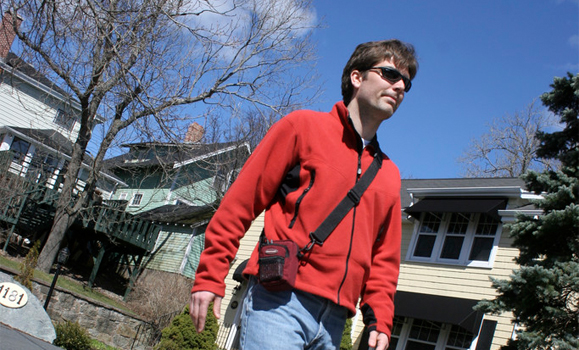There are major differences in the amount of exercise urban, suburban, and rural adolescents get — and active transportation is the key factor.
Daniel Rainham, assistant professor of Environmental Science and leader of the , is co-investigator on a study called ENACT (Environment, Nutrition and Activity), which brought together 12 investigators — 10 from HÂţ» — to study 380 HRM youth ages 12 to 16 to see how much exercise they got and where they got it. Dr. Rainham led the component of the study that used GPS receivers and accelerometers to track participants’ movement within HRM.
The results may surprise you.
“For urban and suburban youth, the biggest amount of physical activity is happening while they’re moving from place to place,” says Dr. Rainham. “In other words, those youth are getting their exercise on sidewalks, paths and streets, so it’s important to make sure those places are maintained and safe for walking.”
And if you have visions of rural HRM youth taking advantage of their natural surroundings for more outdoor exercise—biking, hiking, play—think again: rural youth actually get the least activity of the three groups, and the majority of their exercise happens at school.
“Physical activity is essential for reducing obesity, but rural kids don’t always have amenities for active transport, such as sidewalks and paths,” says Dr. Rainham. “We need to be strategic about where we put resources into supporting exercise. Our results show rural kids get most of their physical activity at school so maybe they should have more time for exercise there. Perhaps there’s also a way to get rural kids involved in active transport.”
The paper outlines broad policy implications. Results suggest that policies promoting physical activity should focus on active transport options in urban areas and enhance options for youth outside of the urban core to engage in active commuting.
The paper, titled was recently published in the .
The ENACT study is based at the Atlantic Health Promotion Research Centre and is funded by the Heart and Stroke Foundation and the Canadian Institutes of Health Research.
 Daniel Rainham.
Daniel Rainham.

